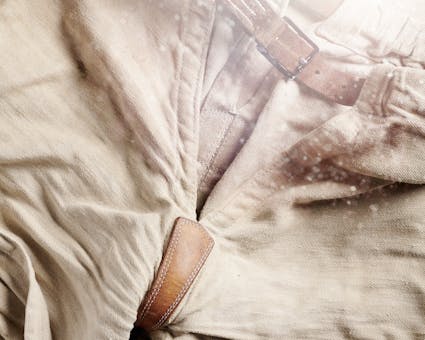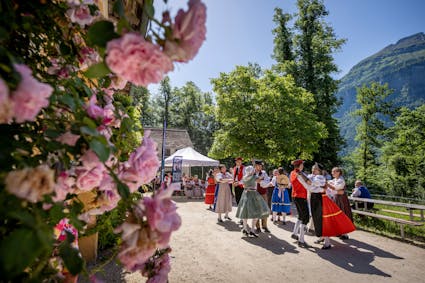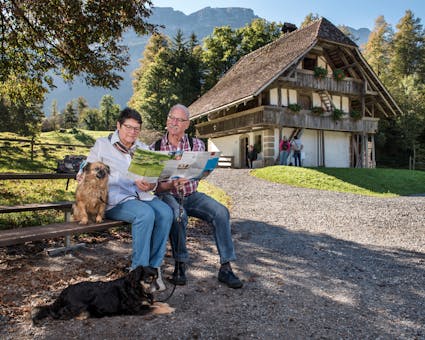Themed trail: on the move across the world
Discover the exciting stories of departure and arrival of people who used to live in the houses at Ballenberg, spread across seven different exhibition stations in the historic buildings.
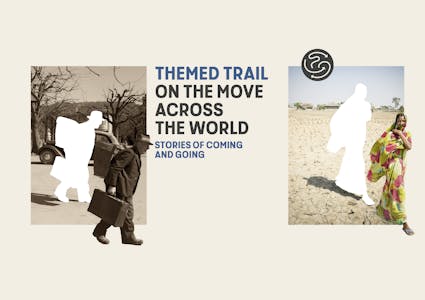
Stories of departures and arrivals
The lives of many of those who inhabited the historic buildings at the Swiss Open-Air Museum were shaped by migration. They belonged to professions that required seasonal mobility, were emigrants and immigrants, or simply never put down permanent roots. The themed trail “On the move across the world” was developed in close collaboration with the Swiss development organisation Helvetas, and offers visitors a unique perspective on these stories of departure and arrival. Stories about the history of each house and the region as a whole will be told at seven different historic houses. Helvetas will expand this historical perspective with stories of people from around the world. Video and audio stations will bring these stories to life and visitors will learn background information and facts about migration at the same time.
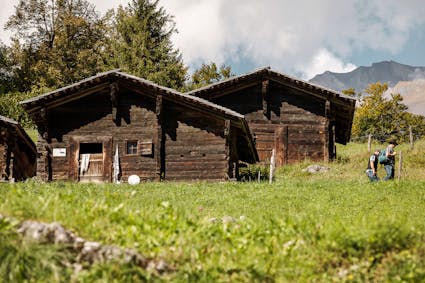
Helvetas
Helvetas is an independent, tax-exempt development organisation without political or confessional affiliation. It is supported by donors and almost 100,000 members. It focuses predominantly on projects in the Global South and works to improve the living conditions of disadvantaged people in Africa, Asia, South America and Eastern Europe, especially in rural areas. In Switzerland, Helvetas uses exhibitions to address global issues that are relevant to the country, making space for reflection and pointing towards how we can take action for a shared, fair and sustainable future.
Helvetas will augment the historic stories along the themed trail with contemporary stories of people from around the world. These stories from past and present contain both similarities and differences.
www.helvetas.org
A journey into the past
One of the stations on the “On the move across the world” themed trail will take you to Cugnasco in Ticino. Hunger and poverty pushed many Swiss people to emigrate to other countries, including Giuseppe Antonio Giulieri, who emigrated from Ticino to the USA in 1889 in search of new opportunities. His story is representative of the fate of many families in Ticino who decided to set out into the unknown in search of work. Giuseppe Antonio returned to his home village decades later. He found that little had changed, and that emigration had taken its toll on the region as it had lost many workers and innovative minds.
Cugnasco, 1905: Photos preserved today mostly show the people who stayed at home, here the family of Amadeo Giulieri, a nephew of Giuseppe Antonio. © Famiglia Calzascia, Cugnasco
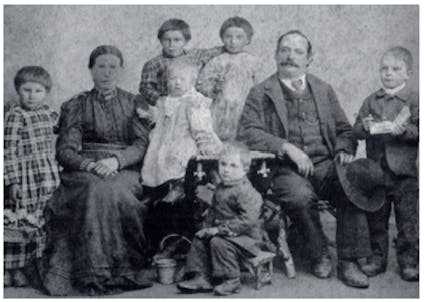
Back to the present
A similar story brings visitors back to the present day: Abdul Akter from the village of Vitman, Bangladesh, decided to leave his homeland in search of work in the Gulf states. As a bricklayer in Bahrain, he endured long working weeks and could only visit his family every few years. But his higher income enabled his wife Halima to maintain their house and buy a plot of land. Halima used this time to access further training as an entrepreneur and turn her sideline in textile handicrafts into a source of income.
Village, Bangladesh 2023: Halima (in the centre with the red scarf) doing handicrafts with her friends and neighbours. © Helvetas / Franca Roatti
Both these portraits give a taste of the exciting stories that you will encounter at Ballenberg.
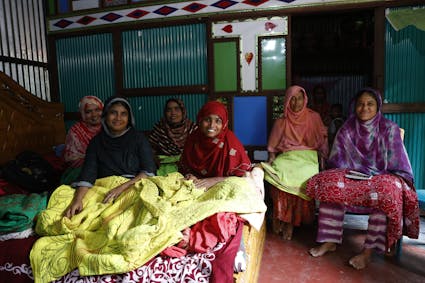
A place to meet, learn more and get involved
There is plenty to spark discussion in the centre of the museum among the Recreation Pavilion, Circus Trailer and Degen Restaurant. Games and quizzes encourage visitors to exchange their personal stories of travelling the world and to talk about their own roots and experiences of migration. We are all united by questions of belonging: how often have we had to say goodbye and start over somewhere else? Where do we feel a sense of connection other than where we live right now? Who do we miss? Where do the people with whom we are closest live?
Events
Further events related to the theme “On the move across the world” can be found here:
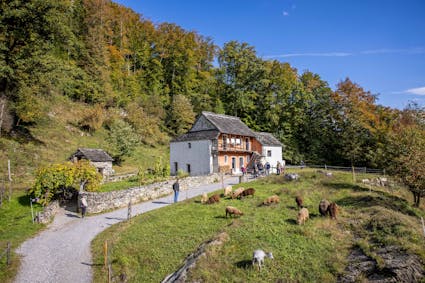
EcoArtLab hosted by the open-air museum
The sub-project EcoArtLab is the result of a collaboration between the Institute of Geography at the University of Bern and Bern University of the Arts. EcoArtLab explores the connection between the climate crisis, environmental change and migration, as well as the role played by Switzerland, in the form of a three-person residency drawing on expertise from research, art and activism. In this way, it creates a new and innovative framework for debates and issues relating to migration and climate justice. In April 2024, students will participate in project weeks on the theme. The results can be seen in installations and events at Ballenberg in the second half of the season. An open event in September 2024 will get the general public involved too. The significance and scale of climate-induced migration will be considered by the both the EcoArtLab project and at the Helvetas exhibition station on Bangladesh.
www.mLAB.unibe.ch
Ballenberg
Swiss Open-Air Museum
Museumsstrasse 100
CH-3858 Hofstetten bei Brienz
Opening hours
10 April to 2 November 2025
10 am to 5 pm daily
